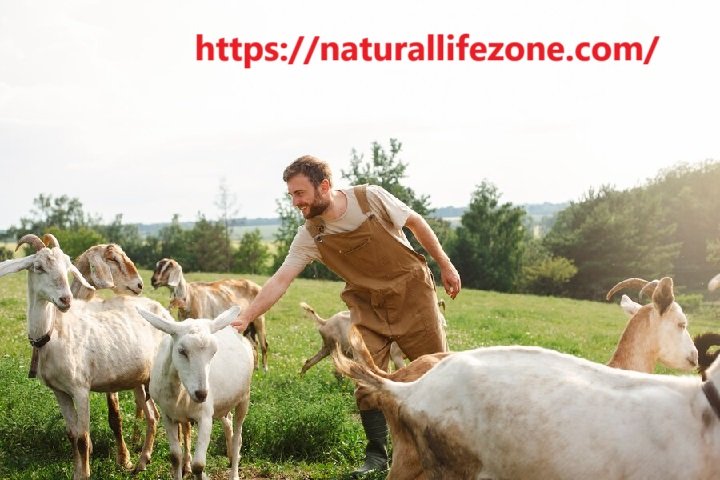Discover the Goat Life: A Guide to Goat Farming and Its Benefits
 Goat Life
Goat Life
Introduction to Goat Life
In recent years, goat farming has gained popularity among both seasoned farmers and hobbyists. The “goat life” represents a lifestyle that embraces the unique qualities of goats, from their playful nature to their incredible adaptability. Whether you’re interested in raising goats for milk, meat, fiber, or companionship, understanding the essentials of goat care is crucial for a successful venture. In this comprehensive study, we will delve into the diverse facets of goat existence, encompassing the different breeds, their requirements for rearing, the merits of goat husbandry, and advice for initiating this endeavor.
1. Why Choose Goat Farming?
1.1 The Benefits of Raising Goats
Goats are not only charming and entertaining animals but also offer numerous benefits for farmers. Here are some compelling reasons to consider goat farming:
- Versatility: Goats can be raised for multiple purposes, including milk production (dairy goats), meat (meat goats), fiber (fiber goats), and even as pets.
- Low Maintenance: Compared to other livestock, goats require less land and are relatively easy to care for. They can thrive in various climates and are known for their hardiness.
- Cost-Effective: Starting a goat farm can be more affordable than raising other livestock. Goats require less feed and have a lower initial investment.
- Sustainable Farming: Goats are excellent foragers and can help manage brush and weeds, promoting biodiversity and healthy ecosystems.
1.2 Economic Opportunities Goat Life
The demand for goat products, including milk, cheese, and meat, is on the rise. By starting a goat farm, you can tap into this growing market and create a profitable business. Additionally, goats can produce products such as soap and lotions from their milk, further diversifying your income streams.
2. Types of Goat Life
Understanding the different types of goats is essential for selecting the right breed for your farming goals. Here are the primary categories of goats:
2.1 Dairy Goats
Dairy goats are bred specifically for milk production. Popular dairy breeds include:
- Saanen: Known for their high milk production and friendly nature, Saanens are white or light cream in color.
- Nubian: These goats are famous for their rich, high-fat milk. They have long ears and a variety of colors.
- Alpine: Alpine goats are known for their adaptability and consistent milk production. They come in various colors and patterns.
2.2 Meat Goats
Meat goats are bred primarily for their meat. The most popular meat goat breed is:
- Boer Goat: Renowned for its rapid growth rate and high meat quality, Boer goats are muscular and hardy, making them an excellent choice for meat production.
2.3 Fiber Goats
Fiber goats are raised for their wool or hair. The most notable breed is:
- Angora Goat: These goats yield mohair of opulent texture, which is in great demand in the textile sector.
2.4 Miniature Goats
Miniature goats are often kept as pets or for small-scale farming. Some popular breeds include:
- Nigerian Dwarf: These small goats are friendly and produce a surprising amount of milk for their size.
- Pygmy Goat: Known for their playful nature, pygmy goats make excellent pets and are suitable for small farms.
3. Essential Goat Care
Successful goat farming requires understanding their basic care needs. Here are some key aspects to consider:
3.1 Housing and Fencing Goat Life
- Shelter: Goats need a clean, dry place to stay protected from harsh weather. A simple barn or shed with adequate ventilation is sufficient.
- Fencing: Goats are known escape artists, so strong, secure fencing is crucial. Consider using woven wire or stock fencing with barbed wire on top.
3.2 Nutrition Goat Life
- Balanced Diet: Goats require a balanced diet consisting of hay, pasture, grains, and minerals. Ensure access to fresh water at all times.
- Foraging: Goats love to browse on shrubs, trees, and weeds, making them excellent foragers. Rotating pastures can help maintain healthy grazing habits.
3.3 Health Care Goat Life
- Regular Check-Ups: Schedule routine veterinary visits to monitor your goats’ health and vaccinations.
- Hoof Trimming: Regular hoof trimming is essential to prevent foot rot and other health issues.
- Signs of Illness: Be vigilant for signs of illness, such as coughing, lethargy, or changes in appetite. Early intervention is key to ensuring your goat’s well-being.
4. Getting Started with Goat Farming
If you’re ready to embark on your goat farming journey, here are some essential steps to follow:
4.1 Research and Planning Goat Life
Before starting your goat farm, do thorough research on the types of goats you want to raise and their specific needs. Create a business plan outlining your goals, budget, and marketing strategies.
4.2 Acquire Goat Life
Once you’re ready, source your goats from reputable breeders or farms. Maintain their health and securely confirm vaccination status. Start with a small herd to learn the ropes before expanding.
4.3 Set Up Infrastructure
Prepare your farm by establishing suitable housing, fencing, and pasture areas. Create a feeding schedule and establish routines for health care and maintenance.
4.4 Join a Community
Connecting with other goat farmers can provide valuable insights and support. Join local farming groups, attend workshops, and participate in online forums to share experiences and learn from others.
5. The Joy of Goat Life
Beyond the practical aspects, goat farming offers a unique lifestyle filled with joy and fulfillment. Goats are famed for their engaging playfulness and probing curiosity, making them captivating farm associates.Here are some ways to experience goat living:
5.1 Building Relationships
Developing a bond with your goats can enhance your farming experience. Spend time with them, engage in playful activities, and observe their behavior. They often respond positively to human interaction and can become affectionate pets.
5.2 Family Involvement
Goat farming can be a fantastic family activity. Involve your children in daily chores and teach them about responsibility, animal care, and the importance of sustainable farming practices.
5.3 Educational Opportunities
Raising goats provides an excellent opportunity for learning. For those with a passion for animal care, farming, or eco-friendly methods, goat farming presents a practical learning opportunity.
5.4 Community Engagement
Participate in local farmers’ markets, fairs, and community events to showcase your goats and their products. Engaging with your community can help foster connections and promote awareness of the benefits of goat farming.
Conclusion: Goat Life
Embracing the goat life can lead to a rewarding and fulfilling journey filled with opportunities for growth, learning, and connection. From their adaptability and low maintenance to their delightful personalities, goats can bring joy to your life and contribute to a sustainable lifestyle.
By understanding the essentials of goat care and making informed decisions, you can create a successful goat farm that aligns with your goals. So, why not take the leap and start your journey into the world of goat farming today? The goat life awaits!
Read More: Healthy Life Wellhealthorganic




